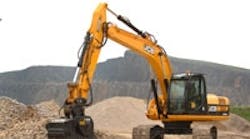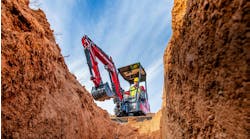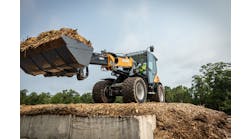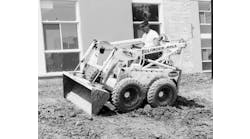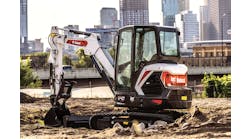JCB Attachments introduces a range of crusher buckets designed to work with the JCB line of tracked excavators, from the JS160 to the JS360. There are three base models of the crusher buckets — the CB60, CB70 (pictured) and CB90.
Powered by the excavator’s standard hydraulic breaker circuit, the crusher buckets use a fixed jaw in the base, with a hydraulically activated hinged jaw in the roof of the bucket. The gap between the two jaws can be set with shims to determine the size of the finished material. The crushing action is achieved by the hinged jaw being cycled in and out using an eccentric mounted on a shaft across the top of the bucket. This shaft is equipped with substantial flywheels at each end and rotated by a belt from the hydraulic motor.
“Being powered by the excavator and able to travel with the excavator, the crusher bucket eliminates the need to transport, hire, or purchase and maintain separate mobile crushing equipment,” says Chris Giorgianni, general manager, product marketing. “Time and costs are reduced as there is no need to have a truck come and haul the material off. The crusher bucket allows for the material to be crushed and used on the jobsite.”
Crusher buckets are capable of reducing site waste, brick, demolition rubble or rock into a usable material, eliminating haulage and disposal costs. They can reduce material to a hardcore size from less than an inch to 4 and ¾ inch.
“Crusher buckets are used for on-site recycling of demolition material, be it in a quarry or on a residential construction jobsite,” says Giorgianni. “Even material with re-enforcing bar can be crushed, so the steel can be recovered for scrap, a feature not available with mobile crushers.”
